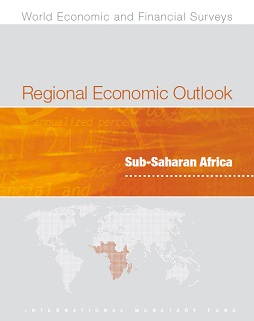
Sub-Saharan Africa
Regional Economic Outlook: Domestic Revenue Mobilization and Private Investment
May 2018
Sub-Saharan Africa is set to enjoy a modest growth uptick, and decisive policies are needed to both reduce vulnerabilities and raise medium-term growth prospects. Average growth in the region is projected to rise from 2.8 percent in 2017 to 3.4 percent in 2018, with growth accelerating in about two-thirds of the countries in the region aided by stronger global growth, higher commodity prices, and improved capital market access. On current policies, average growth in the region is expected to plateau below 4 percent—barely 1 percent in per capita terms—over the medium term. Turning the current recovery into sustained strong growth consistent with the achievement of the SDGs would require policies to both reduce vulnerabilities and raise medium-term growth prospects. Prudent fiscal policy is needed to rein in public debt, while monetary policy must be geared toward ensuring low inflation. Countries should also strengthen revenue mobilization and continue to advance structural reforms to reduce market distortions, shaping an environment that fosters private investment.
Ch 1 - Slow Recovery Amid Growing Challenges
Sub-Saharan Africa is set to enjoy a modest growth uptick. The average growth rate in the region is projected to rise from 2.8 percent in 2017 to 3.4 percent in 2018, with growth accelerating in about two-thirds of the countries in the region. The growth pickup has been driven largely by a more supportive external environment, including stronger global growth, higher commodity prices, and improved market access. While external imbalances have narrowed, the record on fiscal consolidation has been mixed and vulnerabilities are rising: about 40 percent of low-income countries in the region are now assessed as being in debt distress or at high risk of debt distress. On current policies, average growth in the region is expected to plateau below 4 percent—barely 1 percent in per capita terms—over the medium term, highlighting the need for deliberate actions to boost growth potential.
Ch 2 - Domestic Revenue Mobilization in Sub-Saharan Africa: What Are the Possibilities?
Domestic revenue mobilization is one of the most pressing policy challenges facing sub-Saharan African countries. While the reasons may vary according to country-specific circumstances, there are three aspects of domestic revenue mobilization that make it so important.
Ch 3 - Private Investment to Rejuvenate Growth
Private investment in sub-Saharan Africa is low compared with other countries with similar levels of economic development. The low level of private investment is constraining the region’s efforts to improve social outcomes by holding back labor productivity and the resulting gains in real wages and households’ income.


